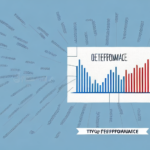Impact of Supply Chain Disruptions on Businesses
Supply chain disruptions are unforeseen events that impede a business's ability to deliver goods and services effectively. In our increasingly interconnected and globalized economy, such disruptions have become more frequent and can significantly affect businesses of all sizes across various industries. Common causes include natural disasters, labor strikes, geopolitical tensions, and sudden shifts in consumer demand. These disruptions can result in delays, quality issues, reputational damage, and substantial financial losses.
Economic Costs of Supply Chain Disruptions
Supply chain disruptions carry significant economic implications for both businesses and consumers:
- Businesses: Experience lost production time, increased transportation and operational costs, and additional expenses related to inventory management. Long-term effects may include reduced market share and lower profit margins.
- Consumers: Face higher prices and shortages of goods, leading to decreased satisfaction and loyalty.
According to a report by the McKinsey & Company, supply chain disruptions can reduce a company's revenues by up to 30% and increase operational costs by 20%.
Causes of Supply Chain Disruptions
Understanding the root causes of supply chain disruptions is essential for developing effective mitigation strategies. The primary categories include:
- Natural Disasters: Events such as hurricanes, earthquakes, and floods can damage infrastructure, disrupt transportation networks, and halt production facilities.
- Geopolitical Risks: Trade disputes, political instability, and sanctions can impede the movement of goods across international borders.
- Operational Issues: Equipment failures, production line shutdowns, and transportation delays can create bottlenecks and escalate costs.
- Pandemics: Health crises, like the COVID-19 pandemic, can lead to widespread disruptions affecting all sectors of the economy.
To mitigate these risks, companies should implement robust risk management strategies, including:
- Contingency planning
- Diversification of suppliers
- Investment in technology for improved supply chain visibility
Proactively addressing potential disruptions helps minimize operational impacts and maintain customer satisfaction.
Recent Examples of Supply Chain Disruptions
The vulnerability of global supply chains is highlighted by several recent events across various industries:
- COVID-19 Pandemic (2020): Caused widespread disruptions across all economic sectors, leading to shortages of vital medical equipment and consumer goods.
- Suez Canal Blockage by Ever Given (2021): This incident halted global shipping traffic for six days, delaying the delivery of raw materials and finished products, particularly impacting the automotive and fashion industries.
- Ukraine Conflict (2022): Disruptions in the supply of critical raw materials, such as palladium and neon gas, have affected the automotive and electronics industries globally.
- Tornadoes in the Midwest USA (2023): Severe weather events disrupted transportation networks and manufacturing operations, impacting the automotive and technology sectors.
These examples underscore the importance of resilience and adaptability in supply chain management.
Building Resilience and Flexibility in Supply Chains
To mitigate the effects of disruptions, businesses must focus on building resilient and flexible supply chains. Key strategies include:
- Proactive Risk Management: Anticipate potential disruptions and develop contingency plans to address them effectively.
- Supplier Diversification: Reduce dependency on a single supplier or region to manage risks related to natural disasters, political instability, and other factors.
- Advanced Technologies: Utilize predictive analytics and digital twins to enhance supply chain visibility and responsiveness.
- Strong Relationships: Foster open communication and collaboration with suppliers and customers to build trust and facilitate rapid responses during disruptions.
Implementing these strategies ensures supply chains remain robust and adaptable in the face of unforeseen challenges.
Sustainable Supply Chain Management
Sustainable practices not only benefit the environment and society but also enhance supply chain resilience:
- Environmentally Responsible Practices: Reducing waste and improving energy efficiency can lower operational costs and make supply chains more resilient to resource shortages.
- Improved Labor Conditions: Promoting ethical sourcing helps prevent disputes and legal issues, ensuring a more stable supply base.
- Long-Term Supplier Relationships: Building strong, collaborative relationships with suppliers fosters trust and facilitates effective information sharing during disruptions.
Prioritizing sustainability leads to cost savings, reduces the risk of disruptions, and contributes to a more resilient and ethical supply chain.
Technology's Role in Managing Supply Chain Disruptions
Advanced technologies are pivotal in enhancing supply chain management and mitigating disruption risks:
- Artificial Intelligence (AI): Enables predictive analytics to identify potential disruptions early and optimize supply chain operations.
- Internet of Things (IoT): Facilitates real-time monitoring of supply chain activities, allowing for immediate responses to issues as they arise.
- Blockchain: Provides greater transparency and traceability, reducing fraud risks and improving efficiency by automating processes.
For instance, predictive analytics can analyze data from various sources, such as weather patterns and supplier performance, to forecast potential disruptions. This enables businesses to proactively mitigate impacts by finding alternative suppliers or adjusting production schedules.
Investing in these advanced technologies is essential for businesses aiming to enhance their supply chain resilience and maintain operational continuity in an increasingly volatile environment.
Case Studies: Successful Responses to Supply Chain Disruptions
Several leading companies have demonstrated effective responses to supply chain disruptions through strategic risk management:
- Apple Inc.: After natural disasters impacted their suppliers, Apple diversified its supply chain and invested in predictive analytics, minimizing disruption impacts and ensuring continuity in product delivery.
- Procter & Gamble: In response to Hurricane Katrina (2005), the company leveraged its global supply chain capabilities to deliver aid and essential supplies efficiently, maintaining its market presence during the crisis.
- Toyota: During the 2011 Thailand floods, Toyota quickly shifted production to other facilities and collaborated with suppliers to find alternative parts sources, resuming production within weeks.
- Amazon: Faced with the COVID-19 pandemic, Amazon enhanced its logistics network and implemented automation technologies to handle increased demand and maintain service levels.
These case studies highlight the importance of proactive planning, diversification, and the integration of advanced technologies in maintaining supply chain continuity.
Future Trends in Supply Chain Management
The landscape of supply chain management is evolving with several emerging trends that are likely to influence disruption risks:
- Digitalization and Automation: Enhancing supply chain efficiencies and reducing disruption risks through technologies like AI, IoT, and robotics.
- Circular Economy: Promoting sustainability by reusing and recycling materials, thereby reducing dependency on raw material suppliers and minimizing waste.
- Blockchain Technology: Improving transparency and traceability, which helps reduce fraud and enhances efficiency by minimizing intermediaries.
- Artificial Intelligence and Machine Learning: Leveraging data analytics to predict disruptions, optimize logistics, and improve decision-making processes.
- Reshoring and Nearshoring: Bringing manufacturing closer to end markets to reduce dependency on distant suppliers and improve supply chain responsiveness.
While these trends offer significant opportunities, they also present challenges such as increased cyber risks and the complexity of managing advanced technologies. Businesses must stay ahead by investing in emerging technologies and adopting best practices to enhance resilience.
Conclusion
Supply chain disruptions pose a considerable challenge in today’s globalized economy, affecting revenue, reputation, and operational efficiency. However, by implementing proactive planning, effective risk management strategies, sustainable practices, and leveraging advanced technologies, businesses can minimize these impacts and ensure continuity. Staying informed about emerging trends and investing in best practices will enable companies to build strong, resilient, and adaptable supply chains prepared to face future challenges.
One notable example is the use of predictive analytics, which allows businesses to anticipate disruptions by analyzing data from various sources, including weather patterns, transportation schedules, and supplier performance. This foresight enables proactive measures, such as securing alternative suppliers or adjusting production timelines, thereby optimizing supply chain operations and reducing the likelihood and impact of disruptions.






















